Beziers, Narbonne and Perpignan deliver a perfect coast-and-city break by rail
Tucked behind the coastal strip curving gently towards the Pyrenees, France’s heritage cities of Beziers, Narbonne and Perpignan along the western Mediterranean shore share a history dating back to the Ancient Greeks and Romans.
Changes in coastline mean that Beziers, Narbonne and Perpignan are today set back from the sea, but together they offer culture and coast, restaurants and retail in one easy-to-navigate trip. The perfect destination to celebrate a significant birthday with my best friend, years after we studied French together at school.
Fly into international airports such as Nimes, Beziers or Toulouse and pick up a hire car, or do as we did and be eco-responsible with unlimited travel for just €10 a day with an Occitanie Rail Pass.
Beziers
We fell instantly in love with Béziers in the department of Hérault, capital of the Languedoc vineyards and the only area of France unaffected by the Phylloxera aphid that ravaged vineyards in the mid-19th century. The town grew rich on wine and today boasts a wealth of ornate Belle Epoque town houses as well as an atmospheric old town with a hilltop cathedral and the remains of a Roman arena.
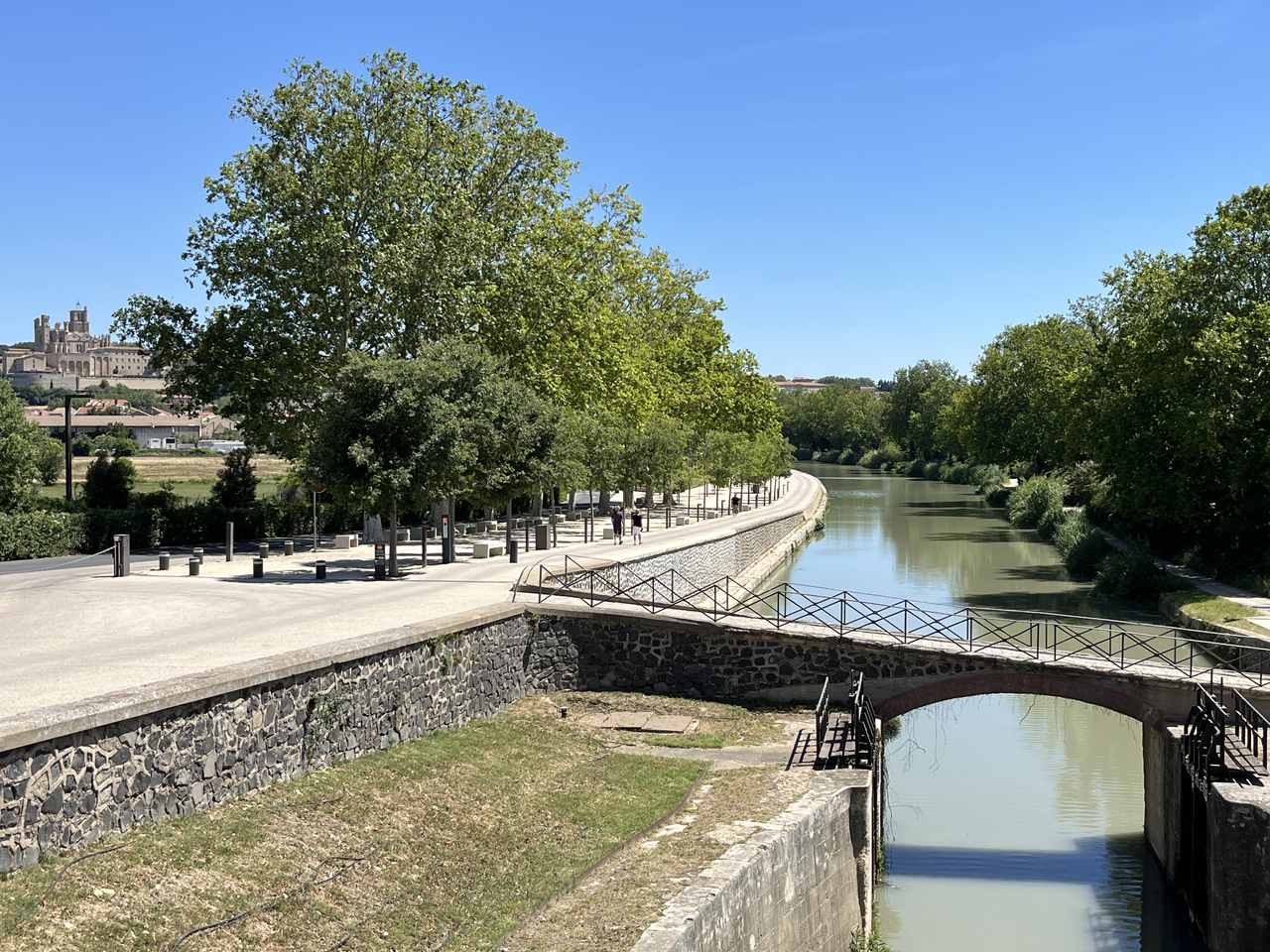
Canal du Midi, Beziers, France
Stroll beneath the trees of the Allées Paul Riquet that cuts an elegant swathe between those ornate mansions. Lined with cafes and flower stalls, it pays homage to Béziers’ most famous son, tax collector turned hydraulics engineer Pierre Paul Riquet, engineer of the Canal du Midi.
We followed the fully accessible walking trail to Fonseranes where the UNESCO-listed canal drops 13.6 metres in just 300 metres via a staircase of nine locks, seven still in use.
We also enjoyed the Painted Wall Trail, easy to navigate on the free annotated map from the Tourist Office, relaxing en route at some of the city’s many wine bars and bistrots, as well as stocking up on French fashion in the retail quarter.
Nearby Agde – just 12 minutes away by train – was founded by the Greeks in the 5th century BC near the mouth of the river Hérault. Wind through the narrow streets of behind the black basalt cathedral; feast on fresh fish at a riverside restaurant; and explore the extraordinary Château Laurens, recently reopened after major restoration.
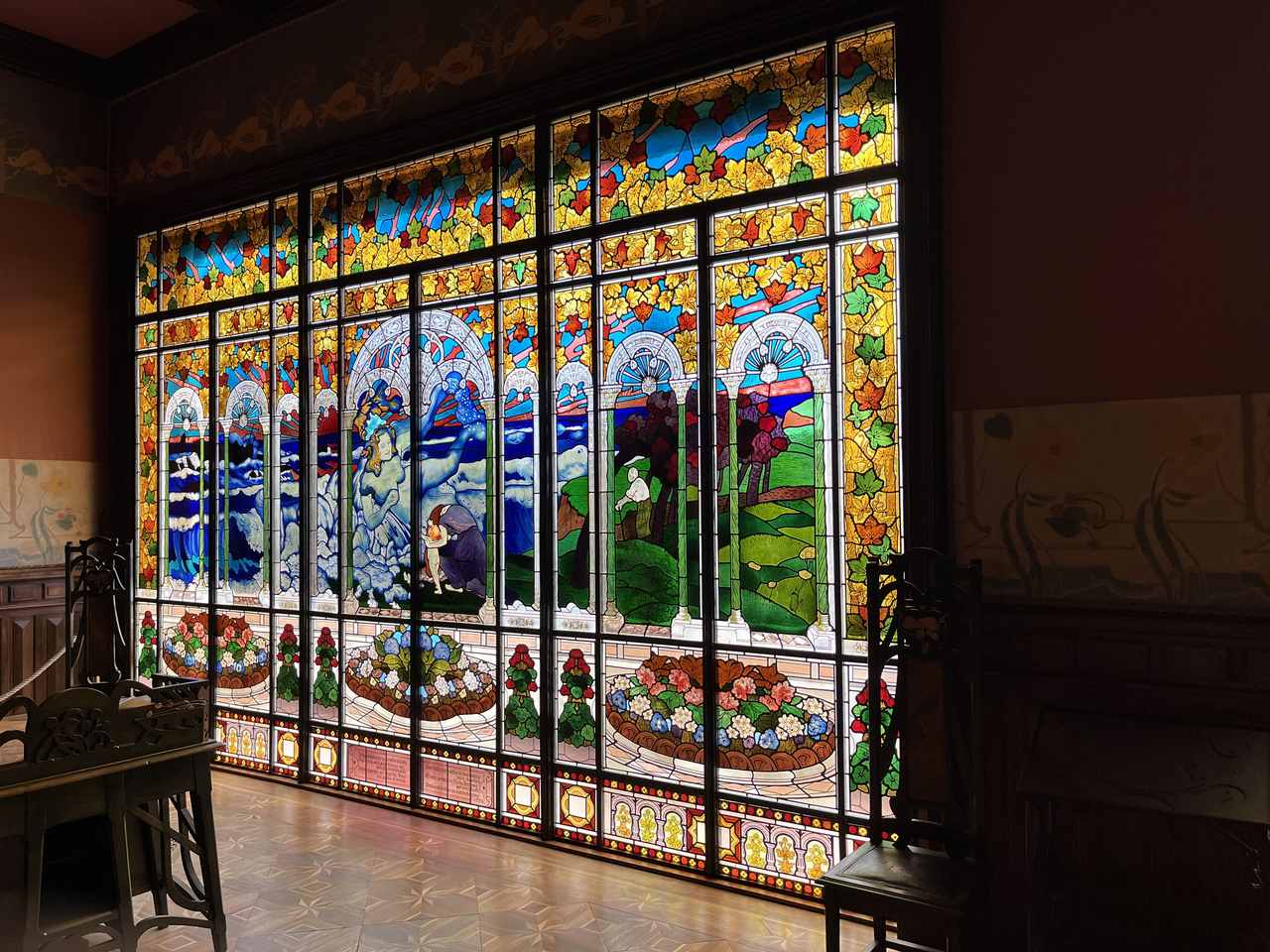
Chateau Laurens, Agde
House envy is guaranteed at this stunning Art Nouveau property where every room is a sensory treat of brightly painted walls, stained glass windows and bespoke furniture.
For a complete contrast, hop on a Cap’Bus at Agde station for Cap d’Agde, one of several seaside resorts created here in the mid-20th century. Family-friendly and affordable, this buzzing small resort offers all the fun of the seaside without the price tag and glitz of the Riviera.
Don’t miss the fabulous Musée de l’Ephèbe, France’s only museum of underwater archaeology packed with ancient Greek artefacts, nor the chance to watch the afternoon catch unloaded and auctioned at La Grau d’Agde fishing port.
Narbonne
There’s more ancient history in neighbouring Narbonne in the Aude department, just 13 minutes by train from Béziers. Established in 118 BC, Narbo Martius was the first Roman settlement in Gaul and the second most important Mediterranean port. This golden age is brilliantly showcased at Narbo Via, an outstanding museum designed by Foster + Partners on the plan of a Roman villa. Expect vibrant wall paintings, intricate mosaics, and stone carvings that bring Roman life and culture zinging vividly to life.
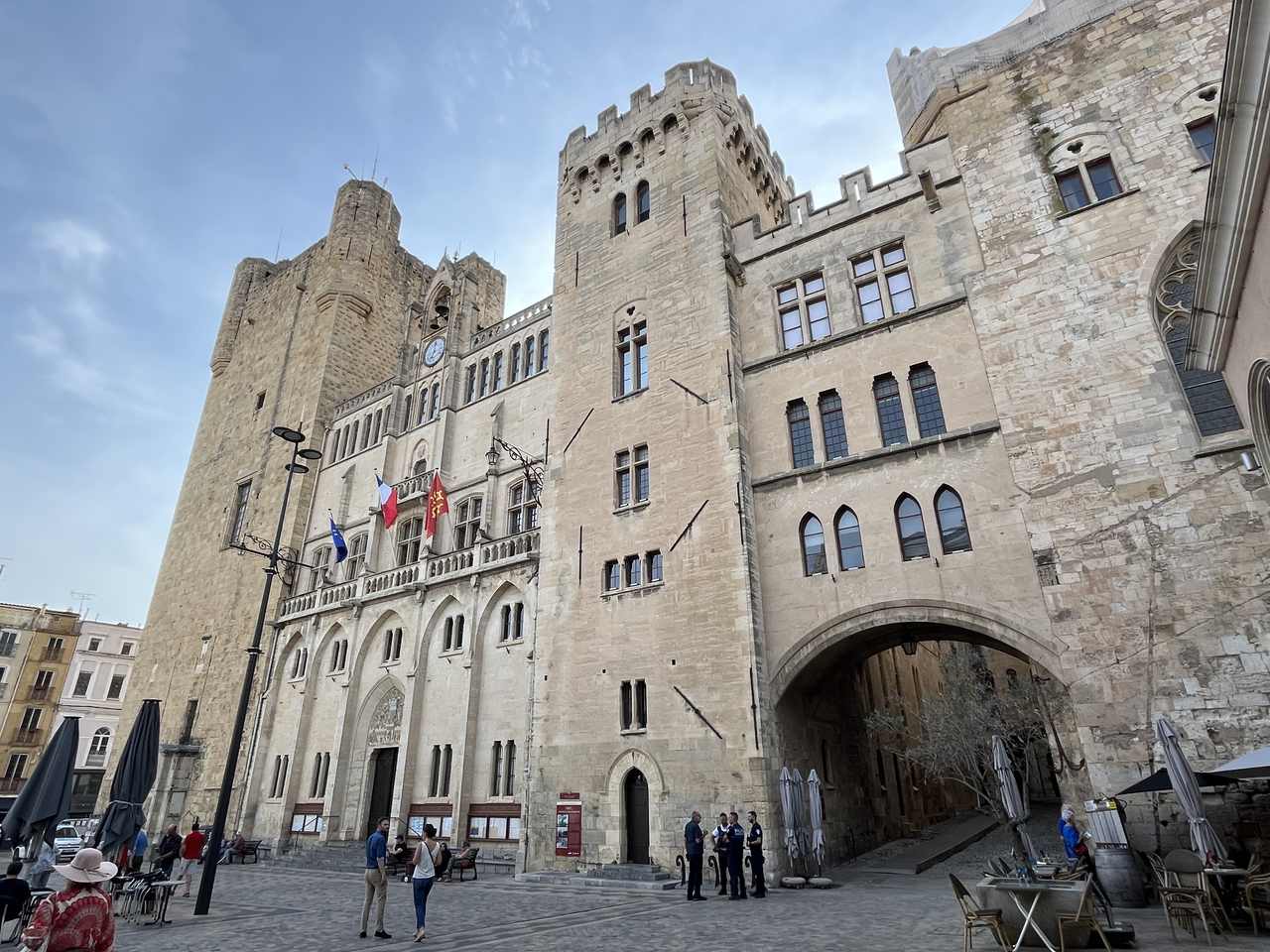
Bishops’ Palace, Narbonne
We loved the relaxed atmosphere of Narbonne. The café tables beneath the plane trees beside the Canal de la Robine; the towering but unfinished cathedral; and the vast Bishop’s Palace, now home to the Town Hall and museum collections. Out front, a section of the ancient Via Domitia still bears the wheel marks of Roman carts.
Beside the canal, elegant 19th century mansions are testament to the profits generated by the wine trade. Hire an electric boat or sit back and enjoy a guided cruise beneath the Pont des Marchands, Narbonne’s answer to the Ponte Vecchio and the only residential bridge in France.
The nearby covered market, built of glass and cast iron, proved the perfect spot for lunch, the communal tables of its tapas and wine bars crammed with diners. Around us, stalls were laden with rainbow displays of fruit and vegetables, glistening fresh fish, and a wide range of deli items and desserts. A dip in the Med? Head for the soft sands and safe waters of Narbonne-Plage on the Côte du Midi.
Perpignan
Whilst Béziers and Narbonne are firmly Occitan in culture, Perpignan – closest to the Pyrenees – is distinctly Catalan, a legacy of the days when Catalonia extended north of the mountain range. Capital of the 13th century Kingdom of Majorca and now chief town in the Pyrenees-Orientale department, the town only came under French rule in 1659 under Louis XIV, but the Gothic red brick palace remains.
First, however, we headed to Collioure on the Côte Vermeille, 20 minutes by train beyond Perpignan and a 70-minute journey from Narbonne. The beachside Royal Palace was the favourite summer residence of those Majorcan kings, and Collioure still attracts holidaymakers with its pretty bays, Royal Castle and much-photographed Clock Tower.
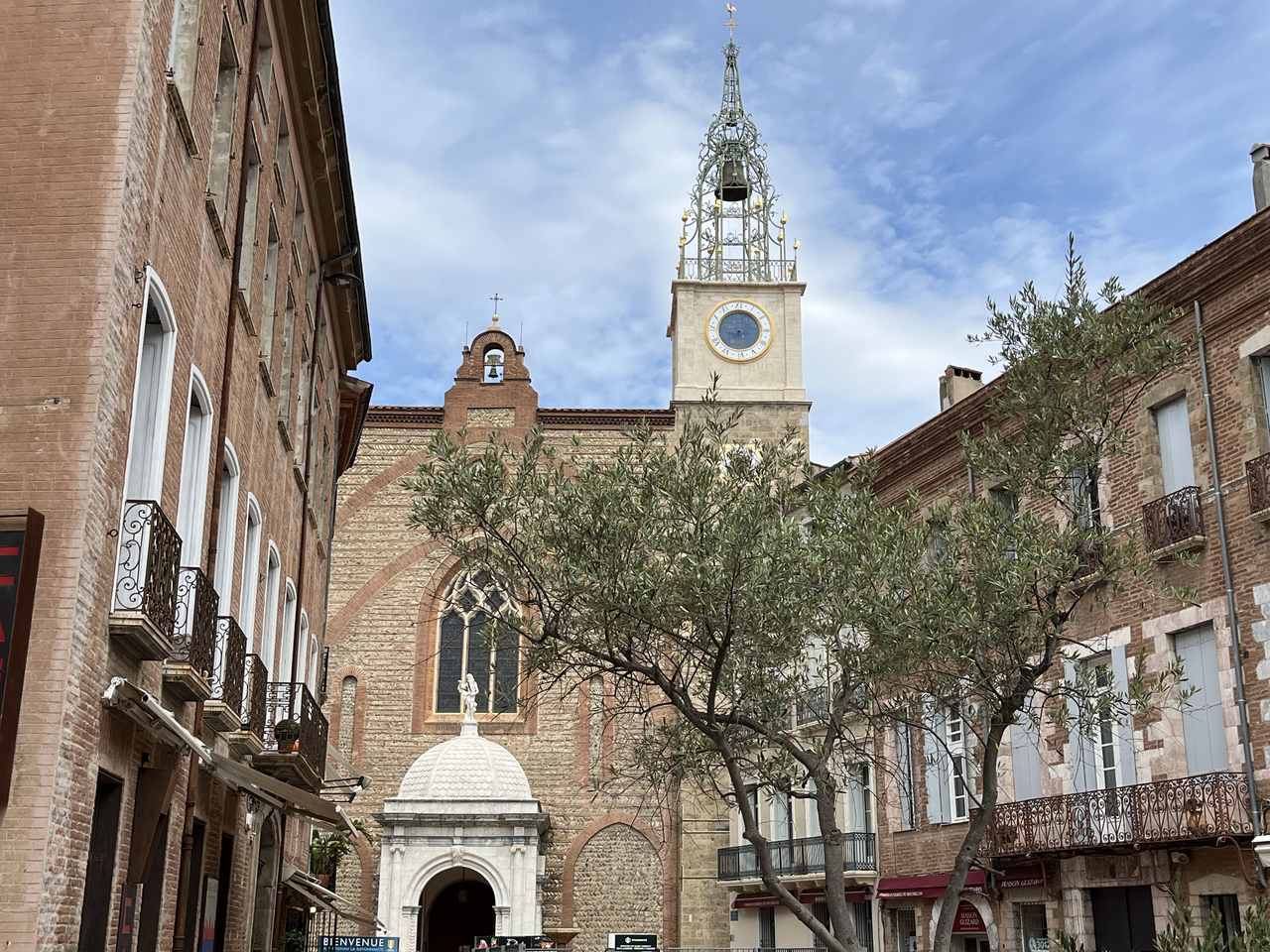
Old town, Perpignan
We browsed the boutiques along the winding streets and lunched on succulent salads beside the Med, but also enjoyed a castle tour and a ride on Le Petit Train up into the vineyards for a seagull’s eye view of Collioure.
And so to Perpignan. Pick up a map at the Hôtel de la Loge in the historic centre, once a trading centre for medieval merchants and now the Tourist Office.Then just wander.
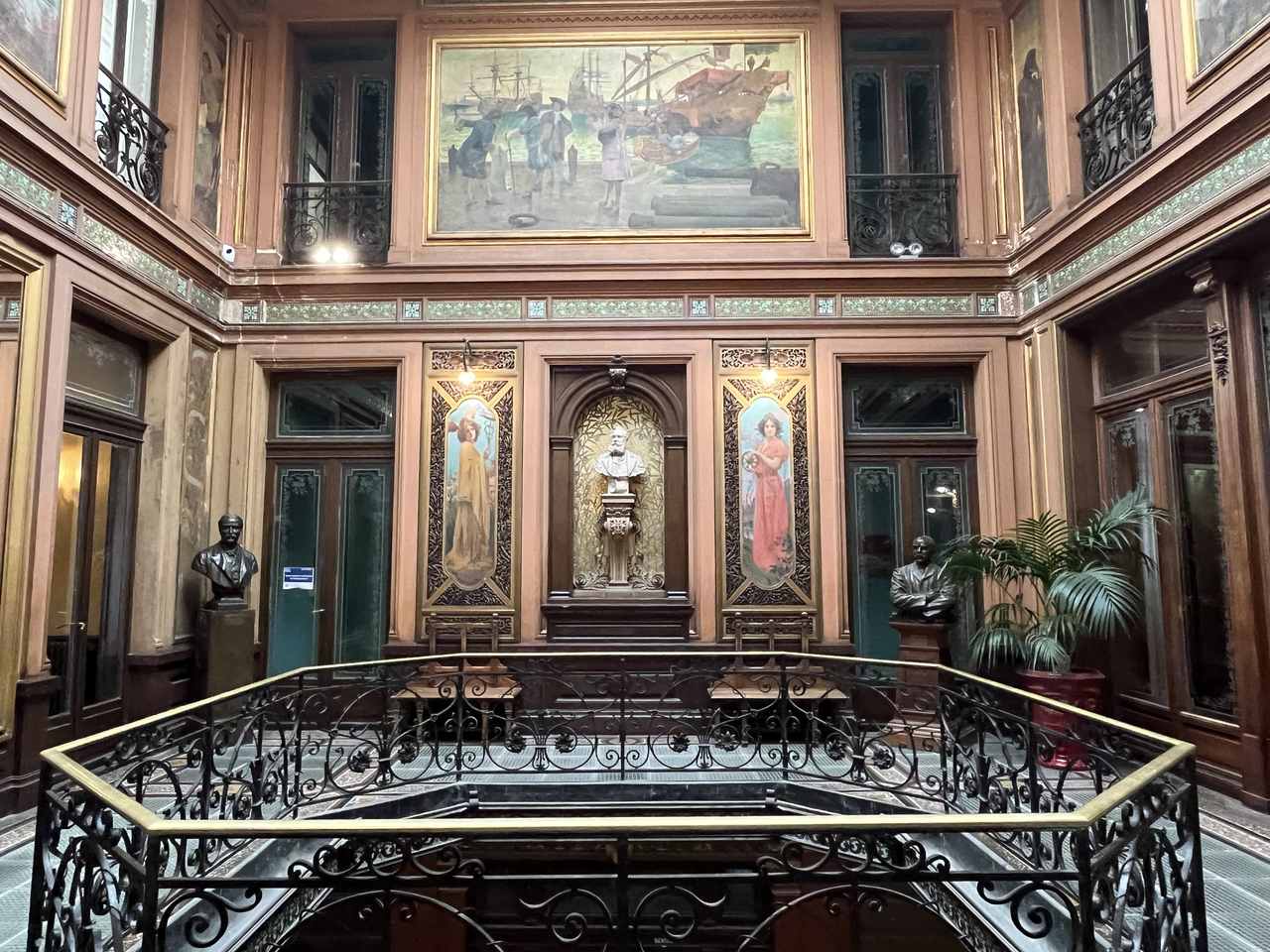
Hotel Pams, Perpignan
We loved the Hyacinthe Rigaud Museum, a Fine Art collection named after the local lad who became court painter to Louis XIV. And the extraordinary Hôtel Pams, originally a factory manufacturing cigarette papers, but subsequently turned into a lavish Art Nouveau town house. Check out the concert programme too at the red brick Gothic palace of the Kings of Majorca for a real flavour of Catalan culture.
Some final retail therapy – Catalan striped linens and high fashion espadrilles – and it was time to raise a last glass of chilled local rosé. Occitanie’s coastal towns had more than delivered for our zero-birthday celebration. Here’s to next time!
FACTFILE
Getting there:
We flew to Beziers and picked up the Occitanie rail network with a Pass costing €10 per day for unlimited travel over 2-6 days. Tourist and travel information from www.voyage-occitanie.com
Useful websites:
- www.cotedumidi.com
- www.capdagde.com
- www.beziers-mediterranee.com
- www.collioure.com
- www.perpignantourisme.com
You might also like:
What is there to see and do in Nantes
Take a ferry from Dover to Calais and visit 5 pretty French towns
The post Beziers, Narbonne and Perpignan deliver a perfect coast-and-city break by rail appeared first on The Travel Magazine.




